Bouchard No. 120 oil spill: Cleanup goals and endpoints
Oil spill cleanup process
Below are the Immediate Response Action Treatment and Completion (IRAC) Guidelines adopted on May 23, 2003 for the Bouchard No. 120 oil spill. Residents should recognize that if a beach satisfies the criteria below, it does not mean that all cleanup activity will cease. Any conditions that develop, such as new tarballs that wash ashore, will be cleaned up. Moreover, “Immediate Response Actions” are really just the first or emergency phase in this oil spill cleanup. The completion of immediate response actions at any location doe not represent any absolute endpoint to the cleanup operation, and in no way precludes any actions necessary for long term cleanup or restoration activities.
Proposed Cleanup Goals and Criteria -May 23 final draft
(completion recommendations for each habitat and beach type)
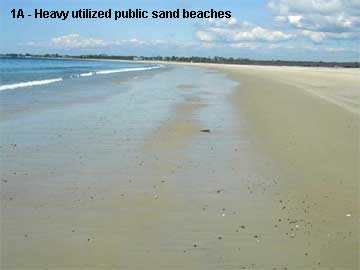
A. Heavily Utilized, Public Recreational Sand Beaches
Completion Recommendations
1. No visible surface or subsurface oil (not detectable by sight, smell, feel), to the maximum extent possible, as rapidly as possible.
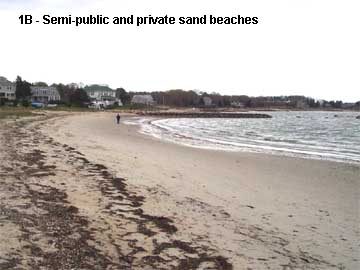
B. Less Utilized, Semi-Public and Private Sand Beaches Completion Recommendations
1. No visible surface, subsurface oil to trace , to the maximum extent possible.
Methods Available
1. Manual removal with minimal clean sediment removal
2. Manual or mechanical (with Unified Command (UC) approval) removal of oiled wrack
3. Removal of buried oil
a. Sites will be surveyed by the digging of 1 foot deep pits at or near the last high tide (LHT) line and the inspection of that pit for tarballs or other oil contamination.
b. The inspection pits will be dug at an interval of 50 yards with a minimum of four pits.
c. If oil is found, the extent of the oil burial will be delineated by the use of successive pits and marked.
d. Test pits will be closed immediately after inspection.
e. Buried oil will be removed with minimal clean sediment removal.
Restrictions
1. Wrack that is NOT oiled should NOT be removed from the beach.
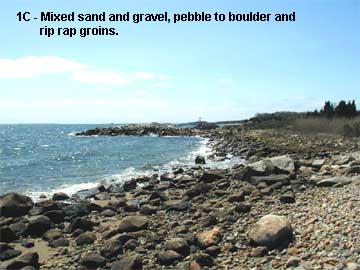
C. Mixed Sand & Gravel, Gravel (pebble to boulder) and Rip Rap Groins (jetties)
Completion Recommendations
1. No sheen
2. Surface: Oil does not come off on the finger when touched
3. Subsurface: Trace
Methods Available
1. Manual removal of oil with minimal clean sediment removal
2. Manual or mechanical (with UC approval) removal of oiled wrack
3. Manual removal of visible oil to coat and thicker.
a. Mechanical (with UC approval)
b. High Pressure/Hot Water (with UC approval)
4. Removal of buried oil
a. Sites will be surveyed by the digging of 1 foot deep pits at or near the last high tide (LHT) line and the inspection of that pit for tarballs or other oil contamination
b. The inspection pits will be dug at an interval of 50 yards with a minimum of four pits.
c. If oil is found, the extent of the oil burial will be delineated by the use of successive pits and marked.
d. Test pits will be closed immediately after inspection.
e. Buried oil will be removed with minimal clean sediment removal
Restrictions
1. Wrack that is NOT oiled should NOT be removed from the beach
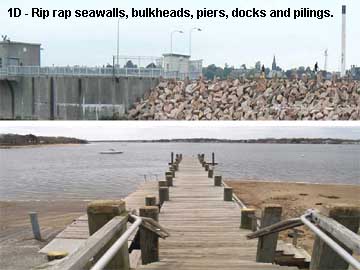
D. Rip Rap Seawalls, Bulkheads, Piers, Docks and Pilings
Completion Recommendations
1. No sheen
2. Oil does not come off on the finger when touched
Methods Available
1. Manual removal of all visible oil, coat and thicker.
f. Mechanical (with UC approval)
g. High Pressure/Hot Water (with UC approval)
2. Manual removal of oiled wrack.
Restrictions
1. Wrack that is NOT oiled should NOT be removed.
2. Chemicals (AKA: shoreline cleaners) may not be used without UC approval.
3. Efforts must be taken to minimize recontamination of unoiled intertidal areas.
4. Capture of released oil.
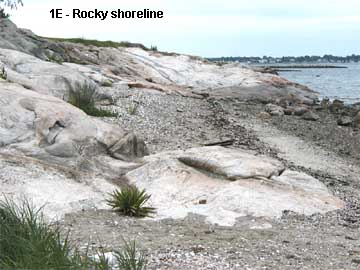
E. Rocky Shorelines
Completion Recommendations
1. No sheen
2. Oil does not come off on the finger touched
Methods Available
1. Manual removal of all visible oil, coat and thicker.
a. Manual
b. High Pressure/Hot Water (with UC approval)
2. Manual removal of oiled wrack
Restrictions
1. Wrack that is NOT oiled should NOT be removed.
2. Chemicals (AKA: shoreline cleaners) may not be used without UC approval
3. Efforts must be taken to minimize recontamination of unoiled intertidal areas.
4. Capture of released oil
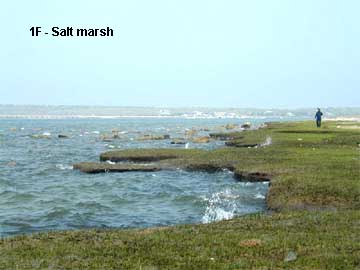
F. Salt Marshes
Completion Recommendations
1. No sheen
Methods Available
1. Remove patches of pooled oil or mousse only under the direct supervision of on-site Environmental Unit personnel and with consultation with the Unified Command.
2. Manual removal of oiled wrack.
Restrictions
1. All removal activity and any activity within a salt marsh (oiled or not) will be under the direct, on-site supervision of Environmental Personnel.
2. Efforts must be taken to minimized disturbance of oiled and unoiled sediments and vegetation
3. As practical and possible floating oil and sheens should be recovered
4. No sediment will be removed without Unified Command approval.
5. No attached vegetation will be removed without Unified Command approval.
6. No vegetation will be cut without Unified Command approval.
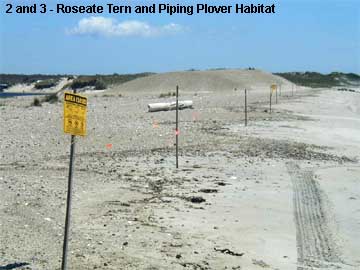
Download the complete Bouchard No. 120 IRAC (a 30 kb pdf file).
Links
Summary of the hazardous waste cleanup process Mass General Law 21E